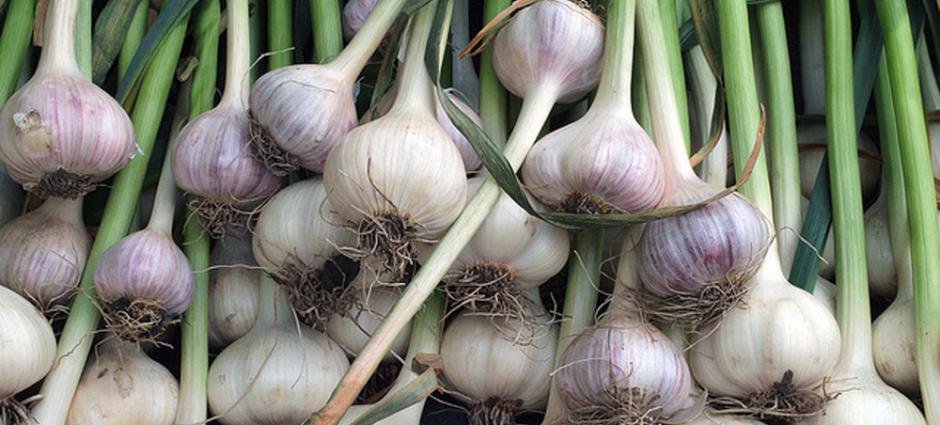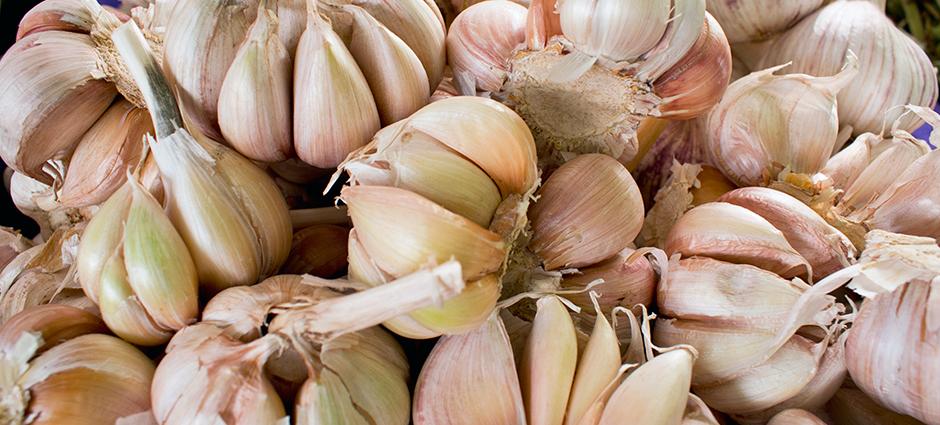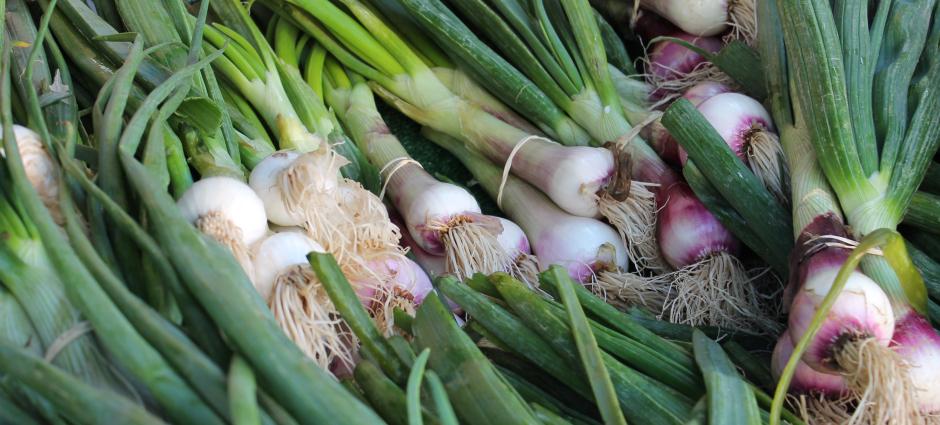Garlic - Cloves of Distinction
“Without garlic I simply would not care to live.” – Louis Diat, French-American chef (1885-1958).
There is something simply wonderful about garlic. Garlic is one of the most popular cooking ingredients in the world and California is the nation’s top producer. Wild garlic and ornamental flowering garlic have been used in landscaping for hundreds of years, but the culinary variety didn’t arrive in North America until the 17th century. French, Spanish, and Portuguese explorers are credited with introducing garlic to North America.
Today, garlic is valued for its pungent flavoring and many culinary uses in a wide variety of foods. It is a necessary ingredient for many cooks. Pan sauces, roasts, pasta, marinades, salad dressings, and much more benefit from a clove or two of fresh garlic.
Garlic is a member of the Allium family which includes onions, leeks, and shallots. It grows like an onion, underground with green slender leaves shooting upward. 0ver 700 varieties exist today. 'California Early' is also known as "Gilroy garlic" because it was developed in Gilroy to be well-adapted to the mild-winter area. Bulbs are large and the layers of 10 to 20 tan to creamy-white cloves are protected by off-white to pink-blushed skins.
There are two main types of garlic: hardneck and softneck. The hardneck type, also called topset garlic, produce fewer but larger cloves, while the softneck types produce smaller, but more numerous cloves. Most of the garlic available at your farmers’ market is of the softneck type which offers more cloves per bulb. It also grows better in the mild California winters. Individual cloves are planted directly in the ground in spring and fall to produce more garlic bulbs.
Garlic grows much like an onion, a single bulb per plant that grows below ground and narrow leaves that grow upward. Garlic bulbs consist of individual cloves a papery skin holding the bulb together and protecting the cloves. Individual cloves also have a papery covering for protection.
Green, or spring, garlic is simply immature garlic. It looks like slightly overgrown scallions or green onions and has a bulb that is usually white with a slight pink tint. It is pulled before the garlic cloves can form. Pulled by growers when thinning crops it has increasingly grown as a crop in its own right, usually harvested in late March to early April. It has a mild flavor and can be used in place of scallions.
Green garlic is often confused with garlic scapes. Green garlic looks more like a scallion, green onion, or spring onion. Garlic scapes are the curled flower stalks of hard-necked garlic varieties. They are cut and removed by growers to encourage better garlic bulb growth. Garlic scapes look like green, thin and curly, straw-like vegetables. Scapes are similar in taste to green spring garlic and appear on the garlic plant about 3 to 4 weeks after the formation of spring garlic. Their curly leaves are lovely as well. Use as you would chives or scallions.
You will rarely find spring garlic or scapes anywhere but at your farmers’ market! This springtime treat is a must-have with its mild flavor and colorful green leaves! Find green spring garlic at J&M Farms from Hollister, Blue House Farm in Pescadero, Happy Boy Farms from Watsonville, Andreotti Farms out of Half Moon Bay, Mova Farm in Merced, and several others at your local farmers’ market.




